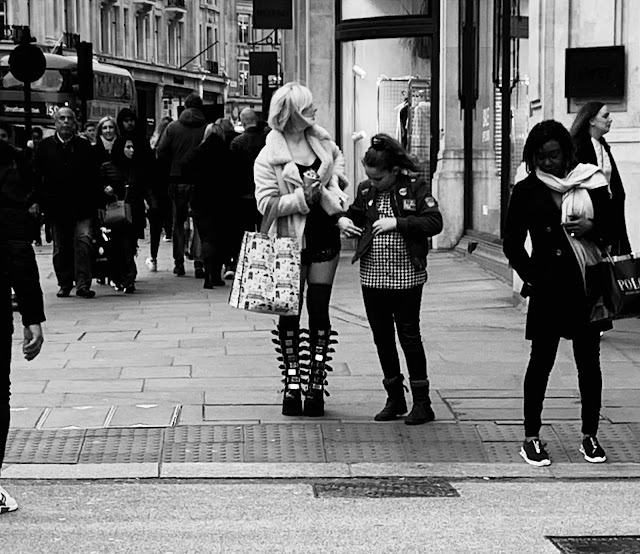 |
| Book shop at The Royal Academy of Arts, London |
Back to Black & White Part III
In my first article on B & W, I gave you a link to introduce you to the Golden Ratio, but just in case you spent most of your time cleaning the house, pouring whiskey, and trimming your petunias, I’ll give you a VERY brief executive summary. See, I know my three faithful readers very well, and if you’re not yet in that distinguished circle, please don’t forget to subscribe!
Back to the Golden Ratio. Fun to know about because it’s everywhere in nature. Most commonly called the Fibonacci Spiral, it a ratio of 1.68 to 1, I’m sure you’re seen it in the spiral of seashells and fiddle head ferns, among other places.
But the ratio doesn't have to be a spiral. A ratio is a ratio. Check out your arm. Inside elbow to wrist is about 1.68 the distance and wrist to fingertip is 1. It’s a ratio all manner of artists have used for centuries. Why? The ratio directs the eye and makes art of every sort more interesting. Here’s an example of a famous photo by Henri Cartier Bresson.
More often, photographers use the 3 thirds method of sitting up a shot, but the golden ratio is used by the pros, so you may want to give it a try.
Now, let’s take a look at more of my Black and White photos, including one I took of a staircase in St. Paul’s Cathedral in London. St. Paul’s, as most of you know, was designed by Britain’s most famous architect, Sir Christopher Wren. (1632-1723, Astronomer, arcthectict, mathematician, anatomist, physicist.)
 |
| St Paul's, London |
 |
| Beaune, France |
 |
| Daunt Books, London |
 |
| Brussels, Belgium |
 |
| Pickering Place, London, once known as Stroud's Court |
 |
| Oxford Street, London |
Hope you enjoyed seeing the photos and enjoyed the drama on my efforts at black and white photography.
Want to read and see more? Travel. Recipes. Short fiction. Poetry. History. Subscribe!









No comments:
Post a Comment